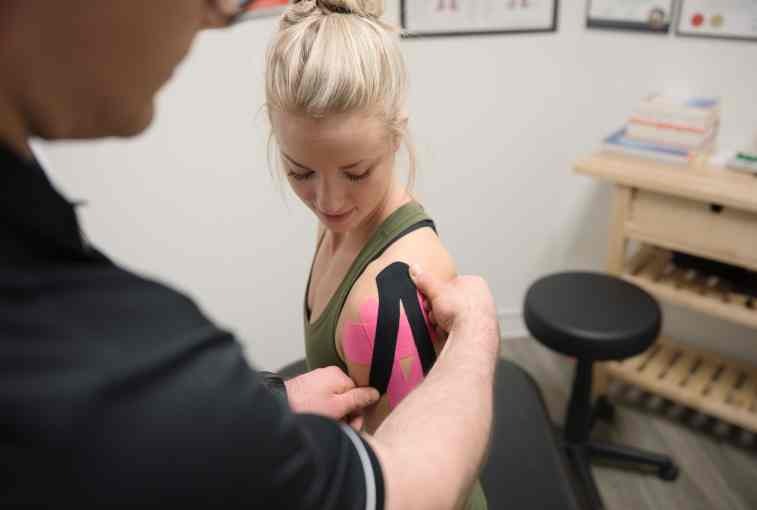Sports medicine is not solely for sports and athletes; rather it is a great resource for people of all ages and abilities. Whether you are a seasoned athlete, just trying to maintain your exercise regimen or trying to become more active, sports medicine delivers everything necessary to start, strengthen, enhance and keep safe.
Defining sports medicine
A sports medicine team includes physicians, surgeons, athletic trainers, physical therapists, researchers, exercise specialists and other specialists collaborating together. They provide advanced care and expertise for recreational activity, physical exercise, and club, high school, collegiate and professional sports.
“Sports medicine is a multidisciplinary approach to maintaining an active lifestyle,” said Dr. Donella Herman, a primary care sports medicine physician at Sanford Orthopedics & Sports Medicine. “We focus on prevention, safe sports participation, health and wellness, and treatment of injuries. You don’t have to be an elite athlete to benefit; any person who is trying to be active can benefit from what sports medicine offers.”
Any time someone is trying to be active, there is a risk of being injured. If an injury develops, sports medicine can help overcome that injury. If someone is just getting started, a strength and conditioning coach can ensure good muscle balance, a complete workout regimen and prevent injuries.
“Primary care sees patients of all ages and for all reasons: general medical conditions, performance enhancement, pre-participation physicals, assessments,” said Dr. Herman. “Older adults who are trying to be active can be screened to see if they are healthy enough to participate in a specific activity. When someone is injured, we diagnose and treat, whether a strain, sprain, fracture or overuse injury.
“As a physician, you get to follow people from that moment of devastation, and then see them progress, heal and get back to the activities they love. You get to know people really well because you see them so frequently and are with them every step of recovery,” she added.
Collaborating as a team
Physicians and surgeons work closely with athletic trainers, who focus on the initial injury evaluation, determining if a student needs to be seen by a physician. The physician diagnoses the student and is able to order X-rays and medications, prescribe specific therapies and treatments and estimate length of recovery. After, the athletic trainer can help with rehabilitation, getting students back into an activity at the appropriate timeframe, or with minor injuries where the student doesn’t need to see a doctor. However, if a student’s injury is more serious, they are referred to a physical therapist for specific, one-on-one rehabilitation and care.
“Athletic trainers in schools are such a valuable resource. They make sure students don’t rush back on the field before they’re ready. They ensure everything is as strong as it needs to be and are there to help the coaches know when the kid is actually ready based on strength and conditioning testing. And if there’s any concerns, they send them back to their physician,” Dr. Herman said.
Preventing injury
Parents can help their children by utilizing sports medicine experts and by helping students achieve balance in life. Research shows youth are more at risk of being injured if they have muscle imbalances and if they specialize in a single sport.
“Students who become one-sport athletes at a younger age are exposed to more overuse injuries. With a multisport athlete, they may not get total rest all year, but throughout the year, certain muscles are taking a rest as sports change,” Dr. Herman said. “For example, a student who plays both basketball and baseball is not getting that repetitive motion of throwing the baseball during basketball season. This reduces the risk of injury to the shoulder.
“We all want our kids to be successful and the best they can be, but that also involves balance. They need time away from sports throughout the year; they need aerobic activity and strength conditioning. Nutrition is important – make sure they are getting enough calories, the right kind of calories for their needs. And students need adequate sleep. Research is starting to show more and more that sleep impacts performance. And sports medicine physicians are able to help parents accomplish this, develop a plan and provide success.”
…
Posted In Health Information, Healthy Living, Orthopedics, Running, Sports Medicine
